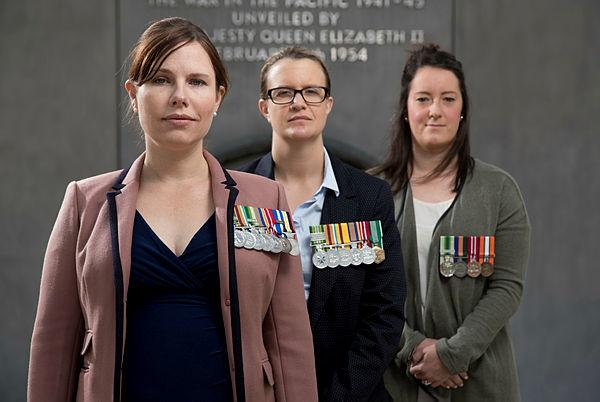
This article is the tenth in a series on ‘Women, Peace and Security’ that The Strategist will publish over coming weeks in recognition of International Women’s Day 2018. Eds.
In previous discussions on this topic, both the Minister of Defence and her fellow parliamentarians have suggested that Australia’s next National Action Plan (NAP) on Women, Peace and Security (WPS) should place greater emphasis on improving opportunities and removing barriers for women.
In my view, that requires greater emphasis on robust ‘outcomes’, not just collecting data on ‘outputs’. It should demand the development of new thinking, the provision of new resources and the will to implement new policy if existing culture or tradition is to be challenged.
Australia’s first NAP was centred largely on issues external to Australian society—that is, outcomes to formalise policy and resource support for women in insecure or conflict situations. However, discussions on drafting the next NAP have raised questions about addressing women’s perceptions and notions of security internal to Australia. That discussion should include perspectives from female Australian Defence Force (ADF) veterans, as well as the support provided to them.
Australia’s first NAP on WPS supported gains across key areas, including participation. Although limited in scope, it provided direction and ensured that the WPS agenda has become integral to Australia’s future thinking about what women bring to all areas of Defence’s operational capability. A headline objective of Strategy 2 of the first NAP in 2012 was increasing the participation of women in all aspects of Defence by removing all gender-based employment restrictions.
Defence is enjoying the benefits of this decision as women excel in areas that weren’t only legally closed, but seen by many as physically and mentally unsuited to females. This increase in professional opportunities has given a new generation of women unfettered opportunities to support key NAP strategies in Australia’s security environment.
On average, an ADF member serves for approximately 10 years. By 2022, most ADF members will have served at least once in direct combat or other high-intensity operational combat roles. Many of them will have served in such environments several times.
A generation of female combat veterans will also make up a larger part of this group than ever before. Successful efforts to increase the participation of women in combat roles, and the benefits to the peace and security environment that these women bring, demands accountability in how we care for these same female veterans.
Women’s perspectives of war and the way Australian society perceives their service is complex. Traditional views of maternal duties, a societal bias towards females being non-violent caregivers, and ingrained expectations of women in the veteran community as widows and carers leave female veterans isolated rather than included.
Women’s experiences of conflict, like men’s, are individual and personal. But just like male warriors, it should be assumed that a common and uniquely female perspective of combat and service will generate different needs in the post-combat and post-service period. A new gender-based perspective needs to be considered when redeveloping veterans’ services and the way we collectively commemorate military service in Australian society.
In 1917 Australian society developed the first of many ‘contracts’ with Australian warriors, with repatriation and then veterans’ policies established. These services were created for the requirements of men, and were provided and approved in large part by men. An ‘outcome’ of the next NAP should include analysis and development of a veterans’ ‘new deal’, one that takes into account that Australia’s warriors are not a gender-specific group.
Although all veteran groups, both government and private, strive to be inclusive, it has been up to a limited number of under-resourced groups like the Women Veterans Network Australia to identify a specific female perspective. A new perspective on veterans’ services and support is needed. Identifying and implementing these services is essential to providing the ‘full circle’ implementation of successful outcomes of women’s full participation in Australia’s security and aid missions.
This challenge isn’t just one for Defence given that it’s based on a social contract between the nation and the warrior. For 100 years, the ‘combat veteran’ has been defined as a male. The NAP should take this opportunity to expand its focus and seek whole-of-nation ‘input’ and allocate responsibilities for ‘outcomes’ related to redefining veteran services in Australia.
The participation of women in combat has been a significant social change. It requires a similar change in our view of veterans, and of the services and support provided by society as a whole.
The redrafting of the NAP provides a unique opportunity for leadership in the development of a national outcome focussing on the reality of female veterans. The Australian government has rightly committed to increasing women’s participation in the ADF as part of its efforts to strengthen WPS. It’s now time to ensure that those efforts are complemented by a gender-responsive approach to our female veterans.